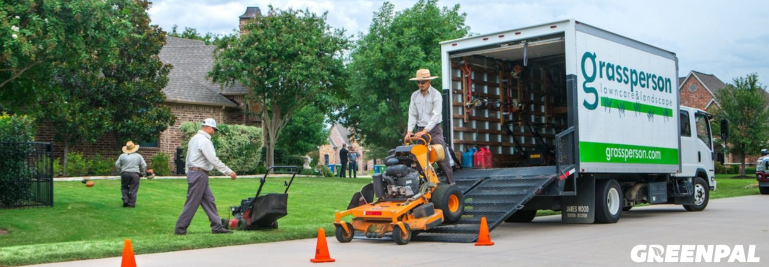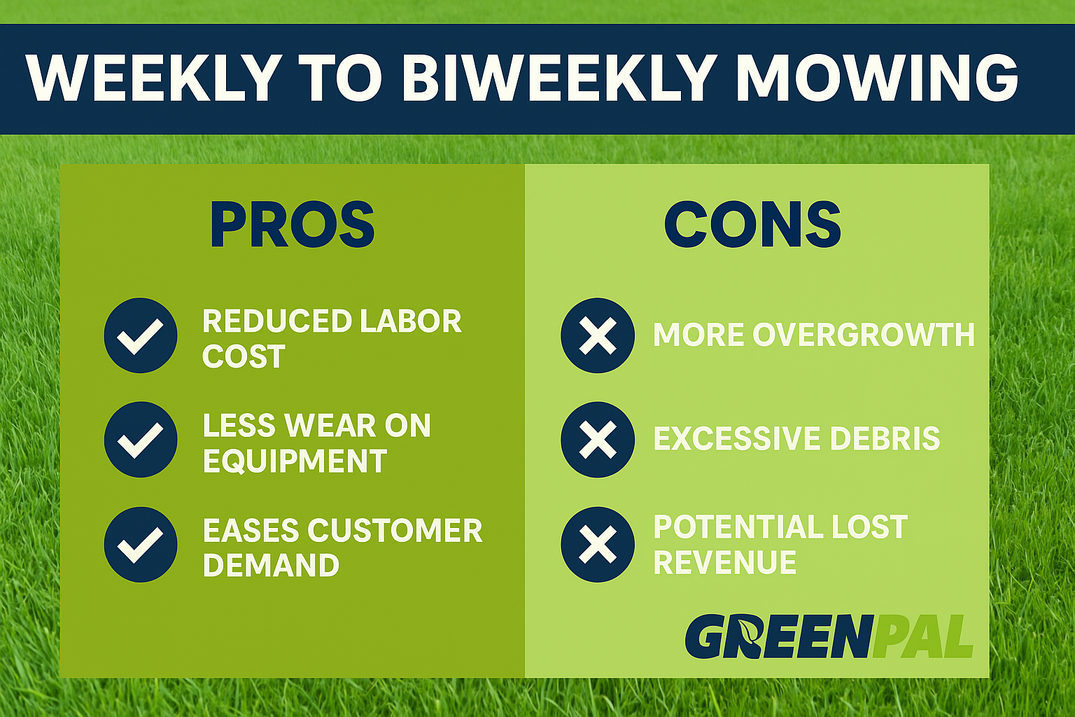Weekly vs. Biweekly Lawn Service: When Should You Make the Switch?
One of the most common questions lawn care pros face each fall is simple: When should you move customers from weekly service to biweekly? To get a real-world answer, we went straight to the professionals. From Texas to North Dakota, contractors shared how they handle the shift, what drives the decision, and how it impacts both their customers and their businesses.
The truth is, there’s no one-size-fits-all answer, but there are clear trends. Here’s what the pros had to say.

What We Learned from Lawn Pros
We asked dozens of contractors across the U.S. how they manage weekly vs. biweekly lawn service. The responses revealed four main factors:
Region – Climate zones dictate grass growth rates.
Weather – Droughts, rainfall, and temperature swings speed up or slow down mowing needs.
Leaf Season – Many pros stay weekly until the leaves are down.
Business Strategy – Some never switch to avoid losing revenue, while others only mow when the lawns actually need it.
When Pros Switch: By Region
Here’s a quick look at the timing reported by professionals across the country:
| Region | Typical Switch to Biweekly | Notes from Pros |
|---|---|---|
| Northern States (MI, IN, NJ) | Late August – Early October | Drought or cooler nights slow grass early. |
| Midwest | September – October | Varies with rainfall; some stay weekly for leaf cleanup. |
| South (TX, TN, VA) | October – November (sometimes December) | Fertilization keeps grass growing longer. |
| West (UT, AZ) | September – October | Still booming growth in early fall before cooling. |
“In northern Michigan, we see trees turning in early September, so we shift sooner than most. By contrast, friends in Texas are still cutting weekly into November.” – Lawn Pro, Michigan
Weather Is the Biggest Factor
Several pros pointed out that rain — or the lack of it — often matters more than the calendar.
Dry spells lead to earlier biweekly or even monthly service.
Cooler nights (40s and below) slow down growth quickly.
Fertilized lawns can keep growing even when neighbors’ yards stop.
“We were still mowing weekly in September until it went 30 days without rain. Then we dropped to every other week.” – Lawn Pro, Tennessee
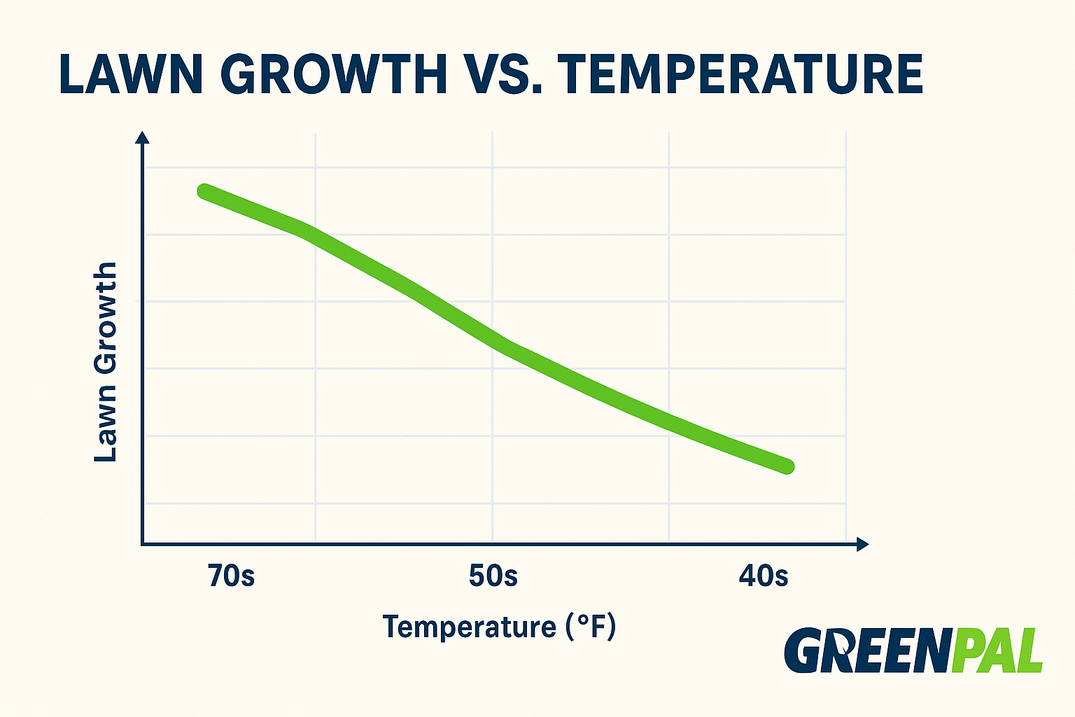
Pros and Cons of Weekly vs. Biweekly
Here’s how contractors explained the trade-offs between the biweekly and weekly mowing, and a few of the tips they gave for when to switch.
Weekly Service
✅ Consistent revenue stream
✅ Keeps lawns and leaves under control
✅ Builds trust with routine-minded clients
❌ Can feel unnecessary when growth slows
❌ Higher cost for customers in slow seasons
Biweekly Service
✅ More efficient when grass growth slows
✅ Saves customers money
✅ Reduces wasted trips
❌ Less consistent revenue for pros
❌ Lawns may look uneven or messy between visits
Customer Communication Is Everything
Whether you decide to keep weekly service longer or make the switch to biweekly, your customers need to understand why. That’s where communication comes in:
→ Set expectations early. Let clients know at the start of the season what your policy is for fall scheduling.
→ Use growth as the guide. Explain that mowing frequency isn’t just about dates — it’s about what the lawn actually needs.
→ Highlight benefits. For weekly, stress consistent appearance and leaf control. For biweekly, point out cost savings and efficiency.
→ Stay flexible. Some customers may prefer to stick to weekly, while others want the savings. Having both options builds trust.
A professional who takes the time to explain the change is far more likely to keep customers happy and loyal.
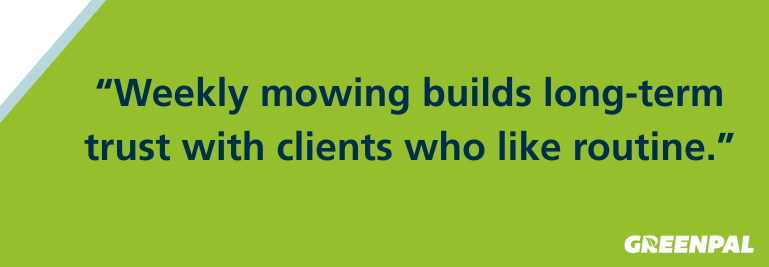
Business Strategy: What Pros Decide
This is where opinions split. Some contractors insist on weekly year-round — adjusting blade height but keeping the schedule steady. Others shift with the season to keep customers happy and avoid wasted work.
The divide often comes down to how you position your business:
Revenue-first pros keep weekly schedules as long as possible.
Customer-first pros adjust to growth patterns, even if it means fewer visits.
Both approaches work — the key is setting clear expectations with your customers.
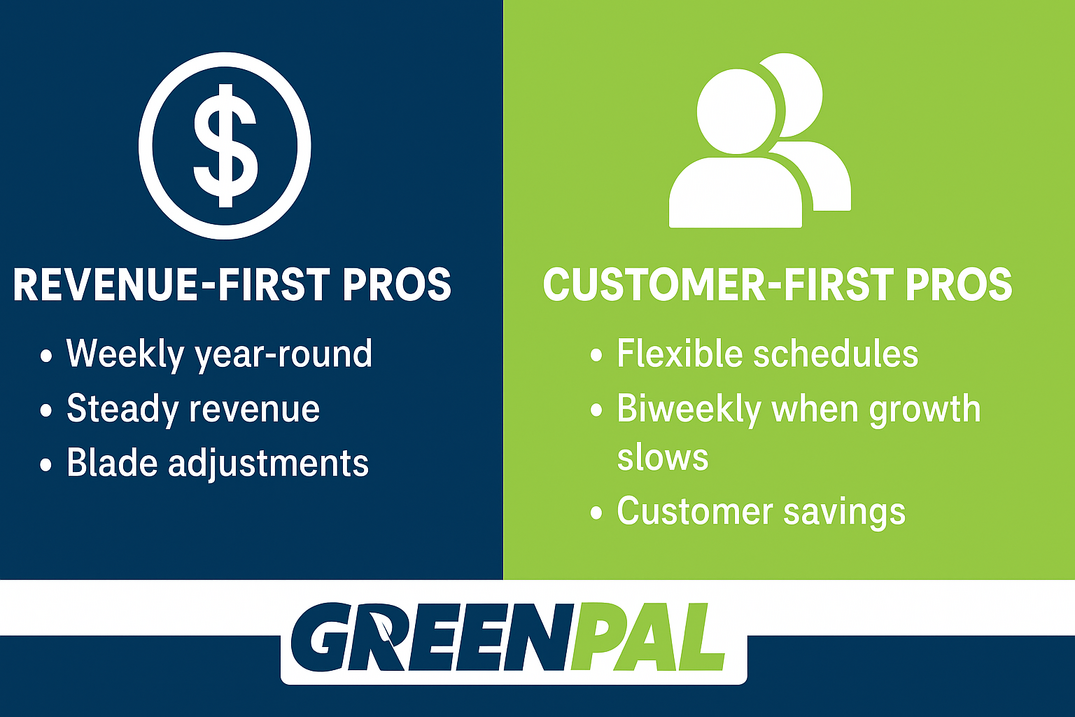
Key Takeaways
There’s no universal “right” time to switch. It depends on location, climate, and your business model.
Weather drives the decision. Rain and temperatures can shift mowing frequency by weeks.
Fall cleanup matters. Many pros stay weekly until leaf season is over.
Communication is key. Make sure customers understand your policy for when weekly becomes biweekly.
Final Thoughts
Switching from weekly to biweekly lawn service isn’t just about grass growth — it’s about balancing customer satisfaction and business profitability. Whether you cut weekly year-round or adjust as the season slows down, the most successful pros are the ones who communicate clearly and keep customers happy.
If you want to find more customers in your area, GreenPal makes it easy. Thousands of homeowners use GreenPal to book lawn care services every day. Become a GreenPal vendor today and start growing your business.







